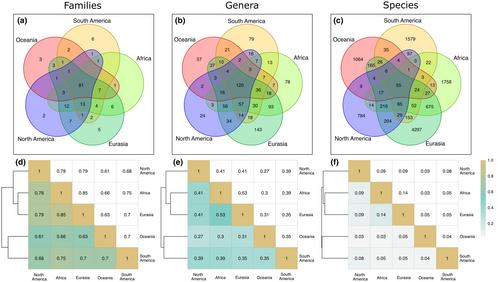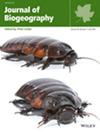Understanding the worldwide distribution of species has fascinated scientists at least since Alfred Russel Wallace. Global patterns of belowground biodiversity may fundamentally differ from those of aboveground organisms. Here, we examine the global pattern and potential mechanisms driving the endemism and overlap of a soil microarthropod taxon.
Global.
Oribatida, Acari.
We investigated the global distribution of oribatid mites in five biogeographic regions including North America, South America, Eurasia, Africa and Oceania using a world list on the distribution of ~11,400 described species (including subspecies) at species, genera and family levels.
We found that most “endemic” (i.e., only occurring in one of the regions) species (4297) and also genera (143) occurred in Eurasia indicating that this region was the centre of radiation of oribatid mites. Within Eurasia, oribatid mite diversity was highest in Southeast Asia (1975 species) likely reflecting the long tropical history of this region (at least 200 million years), and also high fluctuations in water levels and island formation on the Sunda Shield. On a family level, oribatid mite diversity did not differ between biogeographic regions indicating that oribatid mites are much older than the tropics and older than the existence of Pangaea supporting the view of their origin in the early Palaeozoic. Finally, among the 55 species that occurred in all biogeographic regions nearly 50% reproduce by thelytoky and colonize high latitude ecosystems, indicating that compared to sexual species a disproportionally high number of parthenogenetic species is distributed worldwide suggesting that they possess a general-purpose genotype. The other ~50% sexuals predominantly occur in tropical/subtropical regions across biogeographic regions supporting the view that resource shortage in tropical regions favours sex. Our findings highlight the importance of biogeographical studies of soil animals to better understand their diversity, distribution and life history strategies.



